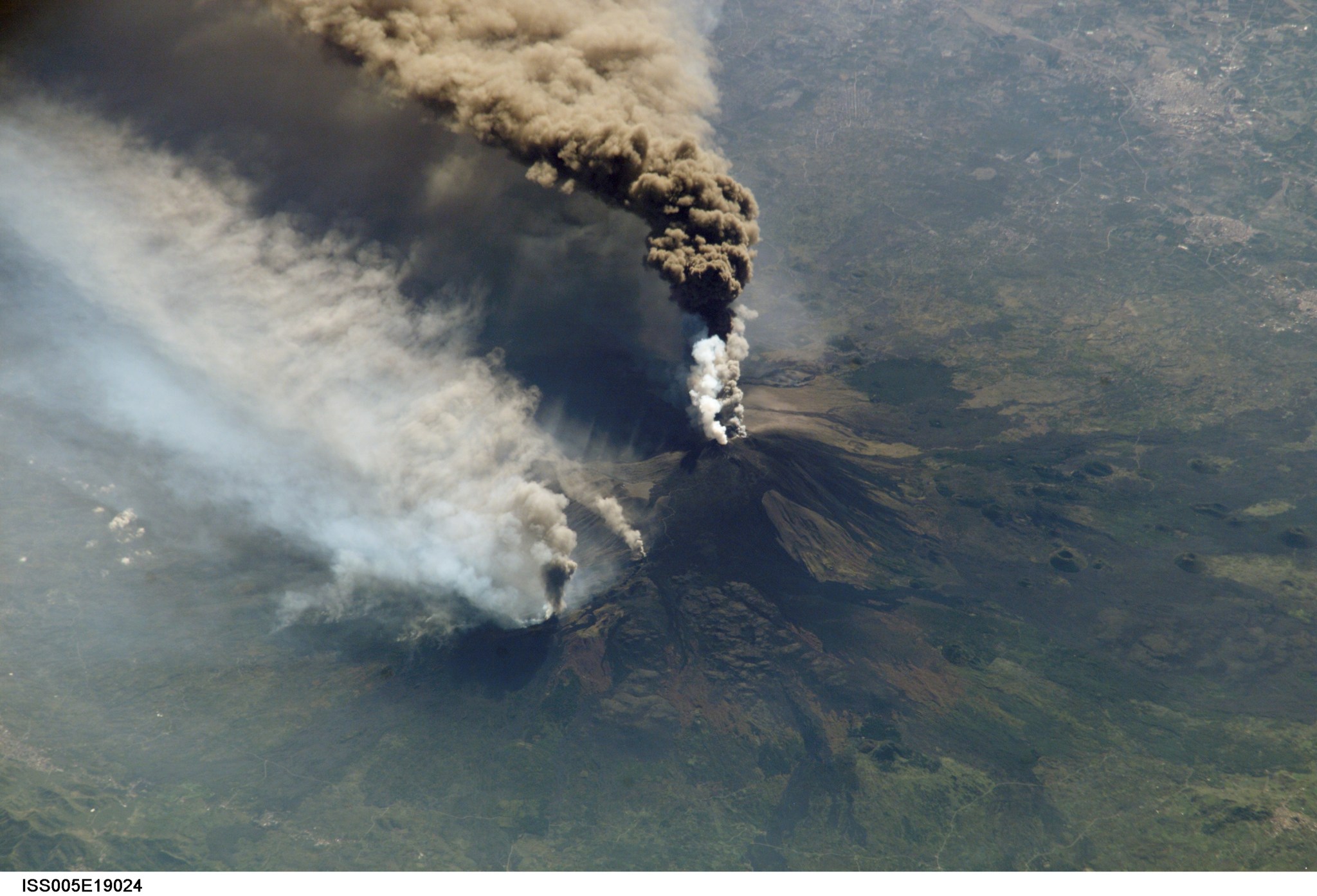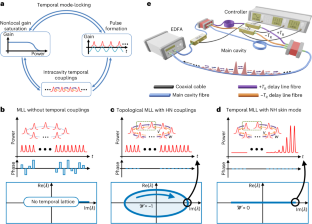2024-03-01 NASA
 (シチリア島のエトナ山)Crew aboard the International Space Station photographed the eruption of Mount Etna in Sicily in October 2002. Ashfall was reported more than 350 miles away. When it comes to explosive power, however, no eruption in modern times can compare with a super eruption – which hasn’t occurred for tens of thousands of years. NASA
(シチリア島のエトナ山)Crew aboard the International Space Station photographed the eruption of Mount Etna in Sicily in October 2002. Ashfall was reported more than 350 miles away. When it comes to explosive power, however, no eruption in modern times can compare with a super eruption – which hasn’t occurred for tens of thousands of years. NASA
<関連情報>
- https://www.nasa.gov/earth/can-volcanic-super-eruptions-lead-to-major-cooling-study-suggests-no/
- https://journals.ametsoc.org/view/journals/clim/37/4/JCLI-D-23-0116.1.xml
火山の超巨大噴火の後、地球は深刻な冷却に見舞われるのか?答えは未知のエアロゾルサイズにかかっている Severe Global Cooling After Volcanic Super-Eruptions? The Answer Hinges on Unknown Aerosol Size
Zachary McGraw,Kevin DallaSanta,Lorenzo M. Polvani,Kostas Tsigaridis,Clara Orbe, andSusanne E. Bauer
Journal of Climate Published:29 Jan 2024
DOI:https://doi.org/10.1175/JCLI-D-23-0116.1
Abstract
Volcanic super-eruptions have been theorized to cause severe global cooling, with the 74 kya Toba eruption purported to have driven humanity to near-extinction. However, this eruption left little physical evidence of its severity and models diverge greatly on the magnitude of post-eruption cooling. A key factor controlling the super-eruption climate response is the size of volcanic sulfate aerosol, a quantity that left no physical record and is poorly constrained by models. Here we show that this knowledge gap severely limits confidence in model-based estimates of super-volcanic cooling, and accounts for much of the disagreement among prior studies. By simulating super-eruptions over a range of aerosol sizes, we obtain global mean responses varying from extreme cooling all the way to the previously unexplored scenario of widespread warming. We also use an interactive aerosol model to evaluate the scaling between injected sulfur mass and aerosol size. Combining our model results with the available paleoclimate constraints applicable to large eruptions, we estimate that global volcanic cooling is unlikely to exceed 1.5°C no matter how massive the stratospheric injection. Super-eruptions, we conclude, may be incapable of altering global temperatures substantially more than the largest Common Era eruptions. This lack of exceptional cooling could explain why no single super-eruption event has resulted in firm evidence of widespread catastrophe for humans or ecosystems.
Significance Statement
Whether volcanic super-eruptions pose a threat to humanity remains a subject of debate, with climate models disagreeing on the magnitude of global post-eruption cooling. We demonstrate that this disagreement primarily stems from a lack of constraint on the size of volcanic sulfate aerosol particles. By evaluating the range of aerosol size scenarios, we demonstrate that eruptions may be incapable of causing more than 1.5°C cooling no matter how much sulfur they inject into the stratosphere. This could explain why archaeological records provide no evidence of increased human mortality following the Toba super-eruption. Further, we raise the unexplored possibility that the largest super-eruptions could cause global-scale warming.



